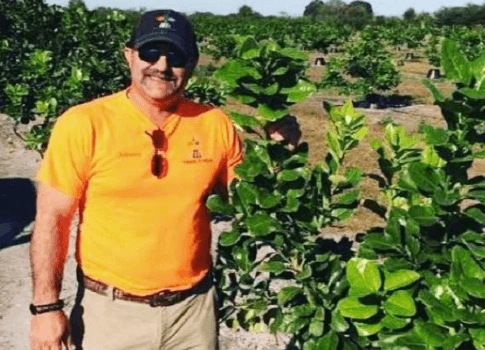Tree T-Pee Net Worth: The Product That Revolutionized Agriculture

The Tree T-Pee represents a significant advancement in agricultural technology, designed to enhance moisture retention while promoting sustainability in farming practices. Its innovative approach addresses critical issues such as water scarcity, positioning it as an essential tool as global demand for eco-friendly solutions grows. However, as Tree T-Pee’s net worth continues to evolve, understanding the factors driving this valuation is crucial. What insights can be gleaned from its market adoption and financial backing that may shape the future of agriculture?
Overview of Tree T-Pee
Tree T-Pee is an innovative agricultural product designed to protect young trees from extreme weather conditions while promoting efficient water usage, making it a vital tool for sustainable farming practices.
Its history reflects a significant advancement in agricultural innovations, addressing the challenges faced by farmers in nurturing saplings.
This product exemplifies the intersection of technology and environmental stewardship, enhancing both crop resilience and water conservation.
See also: Ken Burns Net Worth: Documentary Filmmaker’s Financial Legacy
The Concept Behind Tree T-Pee
The Tree T-Pee represents a groundbreaking approach to water conservation in agriculture, designed to optimize moisture retention around young trees.
Its innovative structure not only provides essential protection against extreme weather conditions but also incorporates features that enhance functionality and ease of use.
Furthermore, the environmental implications of adopting such technology underscore its potential to significantly reduce water usage and promote sustainable farming practices.
Innovative Water Conservation Method
Utilizing a unique design, the Tree T-Pee serves as an innovative water conservation method that effectively minimizes evaporation while maximizing moisture retention for young trees. By harnessing the principles of drip irrigation, it ensures optimal soil moisture levels, empowering farmers to conserve resources and enhance sustainability.
| Feature | Benefit | Impact |
|---|---|---|
| Water Retention | Reduces waste | Environmental health |
| Evaporation Control | Maintains moisture | Crop productivity |
| Cost Efficiency | Lowers expenses | Financial freedom |
| Sustainability | Supports ecology | Future generations |
Design and Functionality Features
An innovative design characterizes the Tree T-Pee, incorporating a cone-shaped structure that effectively captures moisture and creates a microenvironment conducive to young tree growth.
Its design aesthetics blend seamlessly with agricultural landscapes, while functionality enhancements, such as moisture retention and temperature regulation, optimize plant health.
This synergy of form and purpose underscores the Tree T-Pee’s role in sustainable agriculture, fostering freedom for growers to nurture their crops effectively.
Environmental Impact Considerations
Addressing the environmental impact, the Tree T-Pee serves as a sustainable solution that not only enhances plant growth but also contributes positively to ecosystem health by reducing water usage and minimizing the need for chemical fertilizers.
Crafted from eco-friendly materials, it significantly lowers the carbon footprint of agricultural practices, fostering a healthier environment while empowering farmers to adopt more sustainable methods.
Market Demand and Adoption
The market demand for innovative agricultural solutions like Tree T-Pee is driven by the urgent need for increased water efficiency amidst growing concerns over resource scarcity.
As farmers seek sustainable practices to enhance productivity while minimizing environmental impact, the adoption of such technologies becomes crucial.
This shift not only highlights a commitment to sustainability but also positions Tree T-Pee as a viable solution in modern agriculture.
Increasing Water Efficiency
With growing concerns about water scarcity and sustainability, the demand for innovative solutions like Tree T-Pee has surged, highlighting the importance of increasing water efficiency in agricultural practices.
By optimizing traditional irrigation techniques, Tree T-Pee enables farmers to conserve water effectively, reducing waste while enhancing crop yield.
This revolutionary approach not only addresses pressing environmental challenges but also empowers farmers to embrace sustainable agricultural methods.
Sustainable Farming Practices
Growing recognition of environmental sustainability and the need for efficient resource management is driving significant market demand for sustainable farming practices among agricultural producers. Both organic farming and regenerative agriculture are gaining traction, appealing to consumers seeking eco-friendly options.
| Practice | Benefits | Market Demand |
|---|---|---|
| Organic Farming | Soil health, biodiversity | High |
| Regenerative Agriculture | Carbon sequestration, resilience | Increasing |
| Sustainable Practices | Resource conservation | Growing |
Financial Backing and Investments
Financial backing for Tree T-Pee has primarily come from a combination of private investors and agricultural grants, reflecting a strong interest in innovative solutions for sustainable farming practices.
Notably, angel investors have played a crucial role, while venture capital firms are increasingly recognizing the product’s potential.
This financial support underscores the agricultural community’s commitment to fostering groundbreaking technologies that enhance efficiency and sustainability.
Revenue Growth and Projections
The support from private investors and agricultural grants has positioned Tree T-Pee to capitalize on significant revenue growth opportunities as the demand for sustainable farming solutions continues to rise.
With aggressive growth strategies in place, the company anticipates robust revenue projections, driven by increasing market adoption and heightened awareness of eco-friendly practices.
This momentum promises to enhance Tree T-Pee’s financial standing significantly.
Impact on Sustainable Farming
Tree T-Pee’s innovative approach to water conservation plays a pivotal role in advancing sustainable farming practices, enabling growers to reduce water usage while maintaining crop yields. This agricultural innovation not only enhances productivity but also fosters environmental stewardship.
| Benefit | Traditional Methods | Tree T-Pee Usage |
|---|---|---|
| Water Efficiency | Low | High |
| Crop Yield | Variable | Consistent |
| Environmental Impact | Significant | Minimal |
Comparisons With Traditional Methods
Comparing Tree T-Pee’s water conservation techniques to traditional farming methods reveals significant advantages in efficiency and sustainability, highlighting the innovative approach’s potential to reshape agricultural practices.
Unlike traditional irrigation, which often leads to water wastage, Tree T-Pee minimizes evaporation, ensuring optimal moisture levels.
This results in improved crop yield while reducing resource consumption, thus promoting a more sustainable agricultural model.
Future Prospects and Innovations
Innovative advancements in technology and materials are poised to enhance the efficacy of Tree T-Pee systems, potentially revolutionizing water conservation practices in agriculture.
As future technologies emerge, integrating smart sensors and biodegradable materials aligns with evolving agricultural trends, promoting sustainability.
These innovations will not only increase efficiency but also empower farmers to adopt eco-friendly practices, ensuring a resilient agricultural landscape for generations to come.
Conclusion
The transformative potential of Tree T-Pee raises critical questions about the future of agricultural practices in an era increasingly defined by environmental challenges.
As its adoption continues to rise amidst growing concerns over sustainability and resource management, a pivotal moment approaches.
Will this innovative solution redefine farming as it stands, or will traditional methods endure?
The unfolding narrative of Tree T-Pee will undoubtedly reveal whether it becomes a cornerstone of modern agriculture or merely a fleeting trend in an evolving industry.





